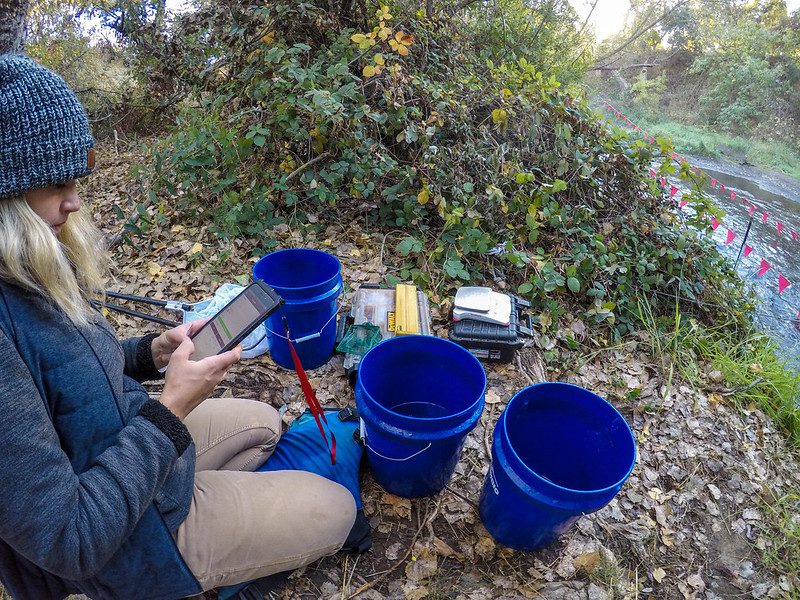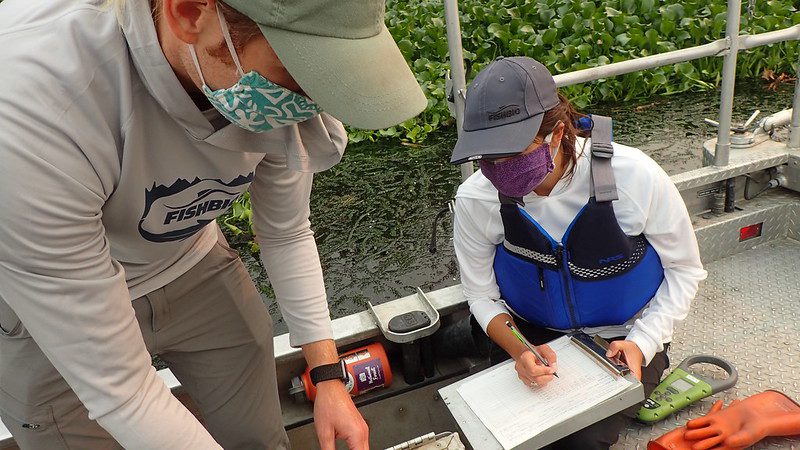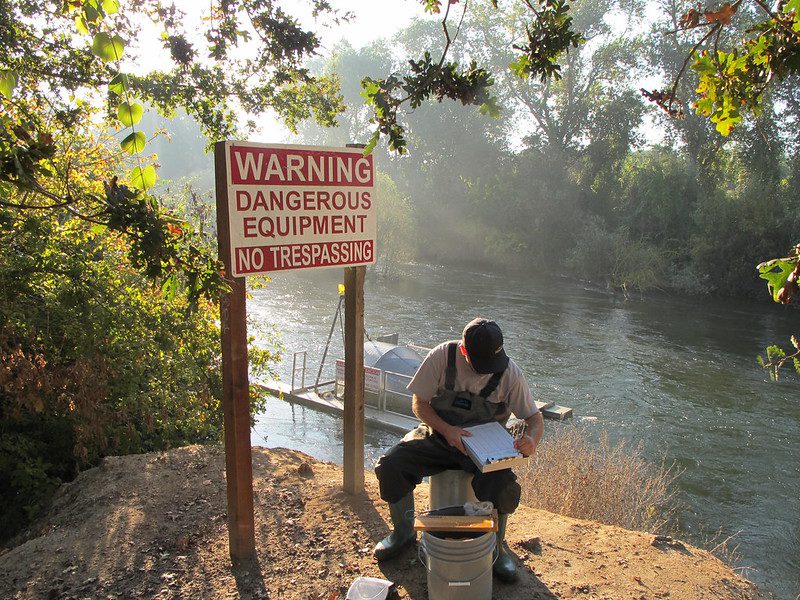Monday March 20, 2023

FISHBIO has upgraded to a new digital data collection method! Fisheries biologists spend much of their time analyzing and presenting data collected from the field. However, a significant amount of effort is also spent on entry, quality control, and processing before the data can be sent to FISHBIO’s biologists and statisticians for interpretation. However, technology has made ecological monitoring and data collection easier, more efficient, and more effective. Handheld GPS devices to map salmon redds, tag readers to track fish, meters that perform complex measurements, and cameras that count fish are all items that FISHBIO staff frequently use in the field. However, more sophisticated gear comes with more complications, and any field biologist can tell a story of technology gone awry and the frustrations that ensue. The environments in which fisheries biologists sometimes find themselves – from scorching heat to freezing sleet – often contribute to these technology failures. However, unique field situations also spur innovations and push the boundaries of current technological capabilities.

Many electronic devices fisheries biologists used decades ago were more cumbersome and had limited capabilities compared to those used now. Each year, FISHBIO has added new equipment to the technological toolkit as the quality and variety of gear options continue to improve. As part of the FISHBIO protocol, any new technology must be thoroughly tested to compare its results to prior methods before it can be incorporated into a study. Even after a technology has proven its utility, it is not uncommon for biologists to want to stick with the tried and true method over the new one. That is why there were many discussions prior to FISHBIO transitioning from paper datasheets to an all-digital format. In late 2022, FISHBIO purchased several rugged field tablets that run software capable of recording all the data typically collected in the field. This was a significant undertaking, because FISHBIO staff commonly counts, measures, and tags hundreds of fish per day. Although a growing number of companies and government agencies that work outdoors have found success in switching to a digital platform, there are limited data collection companies specialized in fisheries monitoring that can also store data securely. However, Wildnote, a company that got its start in wetland delineation, was willing to create specialized digital datasheets and features to fit the unique needs of FISHBIO. An annual subscription to Wildnote includes unlimited data collection and cloud storage, but what FISHBIO found most valuable was their excellent customer service, their response time, and their willingness to adapt their software to the unique needs of fisheries data collection.

From an administrator account, Wildnote allows the subscriber to choose a datasheet form from Wildnote’s library or create a custom datasheet. The Wildnote app can be installed on Android or iOS mobile devices and they are not required to have a cellular or internet connection for the app to function. Upon returning to the office, the data saved to the device can then be reviewed by an administrator before getting uploaded to the main database. An administrator can review, approve, reject, or download the data to Excel and create summary reports.

FISHBIO initially tested the Wildnote data collection app last fall on several key projects, and by the beginning of the winter season staff felt comfortable enough to dive in and implement the digital data collection method across all ongoing field projects. Although entering field data into a tablet versus jotting down data on paper may take a little more time in some cases, the cost savings of removing the need for data entry and QA/QC of paper datasheets will outweigh the occasional extra effort out in the field. Collecting data digitally will also eliminate the need for thousands of sheets of waterproof paper, cases of mechanical pencils, and numerous binders for datasheet storage. Additionally, digital datasheets and cloud storage will serve as an upgrade from FISHBIO’s current databases. Switching to digital data entry with Wildnote represents a significant step towards the modernization of field data collection, and is the first of many big opportunities that lie ahead for technological advancements in fisheries research.
This post was featured in our weekly e-newsletter, the Fish Report. You can subscribe to the Fish Report here.
